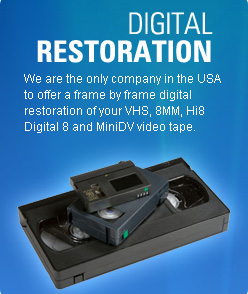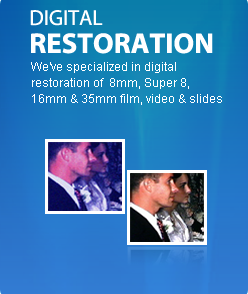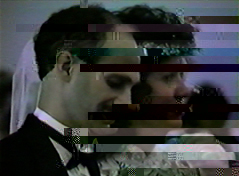
The average video tape is 20-25 years old. Since it was recorded, the colors and exposure have deteriorated and there is more video noise (black speckles) then there was originally. That's why you remember the video looking better than it does now. We can fix many of these problems.
Video Tape Restoration Step 1: Broadcast Machines
First, you want to get the best quality from the tape possible. For our Pro SD and Pro HD process we use professional broadcast machines. Our broadcast machines will get the best color and exposure possible from the tape itself. In addition, these broadcast machines can correct tape tacking/rolling issues in most cases.
Below, we are showing the difference between our SD and Pro SD/HD process. The SD process will produce video that looks like the original tape on the left. The Pro SD/Pro HD process with tracking/rolling correction produces video like that on the right.
The Professional tape deck Difference |
|
Original Video |
Color / Exposure |
Color/Exposure Enhancement: Some video tapes need color and exposure correction based on age of the tape. The older the tape, the more correction it will most likely need. This example includes color correction as well (see below). |
|
Original Video |
Tracking / Rolling |
Tracking Correction: Not all tracking/rolling issues can be fixed by the Pro SD or Pro HD process. In practice we see the broadcast decks reduce tracking/rolling issues by about 75%. This example includes color correction as well (see below). |
|
Video Tape Restoration Step 2: Color Correction
Now that you have the best result from the tape itself, you want to improve the image quality. We can start with the color which usually shifts uniformly and sometimes will get darker as it ages. Not all color and exposure issues can be fixed. The example below shows a uniform color/exposure shift. This can be fixed. However, some video tapes show green or red flaring around people or objects and is not a uniform color shift. These types of issues cannot be fixed. Color correction is a labor intensive activity so we do have to charge extra for this optional service.
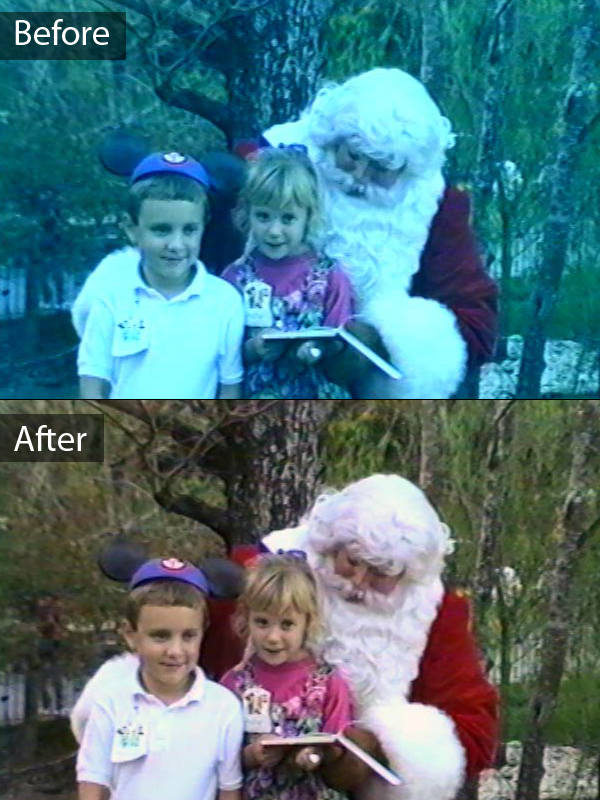
Video Tape Restoration Step 3: Noise Reduction
Lastly, we can remove over 95% of the little speckles that we call video noise. This process is compute intensive and it increases the time it takes to make the target format you request by 7 times what would be normal. Because of this we do have to charge extra for this optional service.
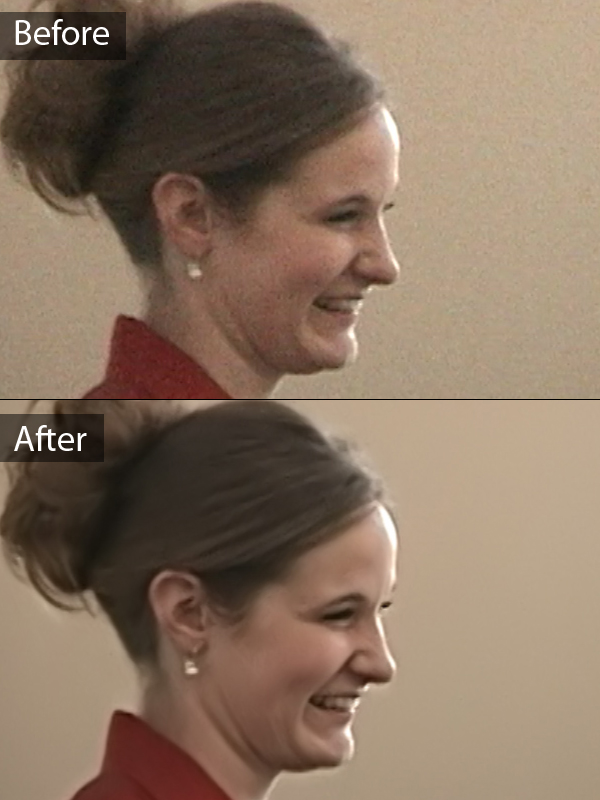
*Quality of restoration is dependent upon condition of existing videotape; severely deteriorated original materials may be beyond the reach of even the most sophisticated restoration methods.
